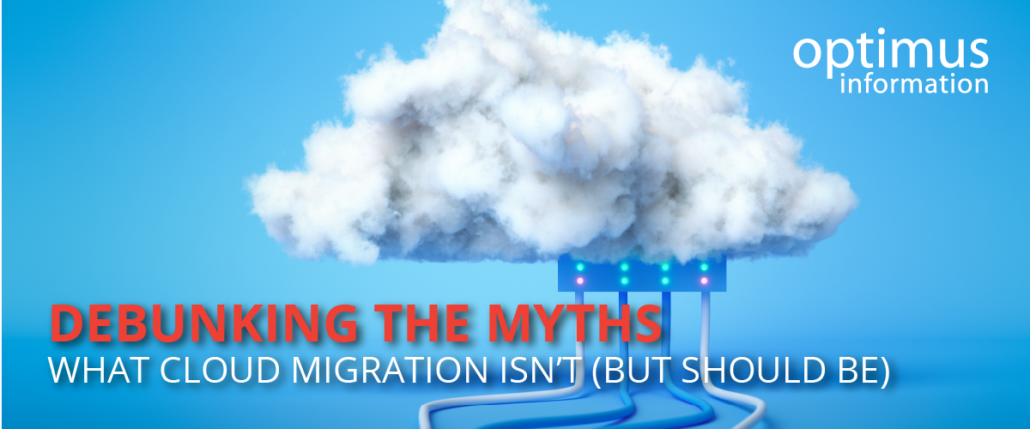Cloud migration has become a hot topic for businesses of all sizes. The promise of scalability, agility, and cost savings is undeniable. However, many misconceptions and myths still surround this process. Let’s debunk these myths and shed light on what cloud migration truly is and what it should be.
Myth #1: Cloud Migration is a “Lift-and-Shift” Only Approach
Imagine simply picking up your entire server room and plopping it down in a virtual data center. That’s the idea behind a lift-and-shift approach to cloud migration. While it might seem efficient, it doesn’t leverage the full potential of the cloud. A true cloud migration should be an opportunity for optimization. By re-architecting applications to be cloud-native, you can take advantage of features like auto-scaling and serverless computing, leading to improved performance and cost savings.
Imagine this: you pack up your entire house and simply dump everything in your new apartment – furniture, clothes, even the kitchen sink. That’s essentially the “lift-and-shift” approach to cloud migration. While it seems like a quick fix, it doesn’t leverage the full potential of the cloud.
A successful cloud migration should be more like a well-planned move. You might decide to sell some furniture, donate old clothes, and invest in new appliances for your modern kitchen. Similarly, a cloud-native approach involves re-architecting your applications to take advantage of cloud functionalities like scalability and on-demand resources. This optimization can lead to significant performance improvements and cost savings.
Myth #2: Cloud Migration is Expensive and Complex
The fear of upfront costs and migration complexity is a common deterrent. However, the reality is that cloud migration can be cost-effective in the long run. On-premise infrastructure requires constant investment in hardware, software licenses, and maintenance. Cloud computing offers a pay-as-you-go model, eliminating upfront costs and allowing you to scale resources based on your needs. Additionally, numerous tools and services are available to streamline the migration process, minimizing downtime and disruption.
Myth #3: Security is Less Robust in the Cloud
Many businesses cling to the belief that their data is safer locked away in their own data centers. However, cloud providers invest heavily in advanced security measures, including firewalls, intrusion detection systems, and data encryption. Furthermore, cloud platforms offer automatic updates and disaster recovery solutions, ensuring your data remains protected and accessible even in the event of a security breach. The key lies in choosing a reputable cloud provider with a proven track record of security.
Read more here: 5 Cloud Security Best Practices
Myth #4: Cloud Migration Leads to Data Loss or Vendor Lock-in
Your data remains yours in the cloud. Cloud providers offer robust data ownership and control mechanisms. Additionally, cloud migration tools can facilitate easy data transfer between providers, mitigating the risk of vendor lock-in. For businesses with specific data regulations, compliance considerations during cloud migration are crucial. However, most reputable cloud providers offer solutions and support to ensure adherence to data privacy regulations.
What Cloud Migration Should Be
Cloud migration should be more than just a technical exercise. It’s a strategic business move with the potential to transform your organization. Here’s how:
- A Strategic Business Move: Cloud migration should be approached as a strategic decision to improve agility, scalability, and innovation. By moving to the cloud, you gain access to on-demand resources that can adapt to your changing business needs, allowing you to capitalize on new opportunities faster.
- An Opportunity for Optimization: Don’t just move your applications to the cloud; optimize them for the cloud environment. By re-architecting applications to be cloud-native, you can unlock the full potential of the cloud in terms of performance, cost savings, and functionality.
- A Collaborative Process: Cloud migration is not a one-man show. Involve different teams (IT, operations, business stakeholders) in the planning and execution phases. Clear communication and collaboration are essential for a successful migration that aligns with your overall business goals.
To learn more, check out our blog: Common Cloud Adoption Missteps during the Strategy & Planning Phase
Moving Forward
Cloud migration offers a wealth of benefits for businesses of all sizes. By debunking the myths and approaching migration with the right mindset and planning, you can leverage the cloud to achieve greater agility, scalability, and innovation.
Conclusion
Cloud migration is more than just a technical exercise; it’s a strategic move with the potential to transform your business. By debunking the myths and approaching migration with the right mindset and planning, you can unlock the true potential of the cloud and achieve significant benefits for your organization.
Ready to start your migration? Schedule a quick call to discuss your needs.


